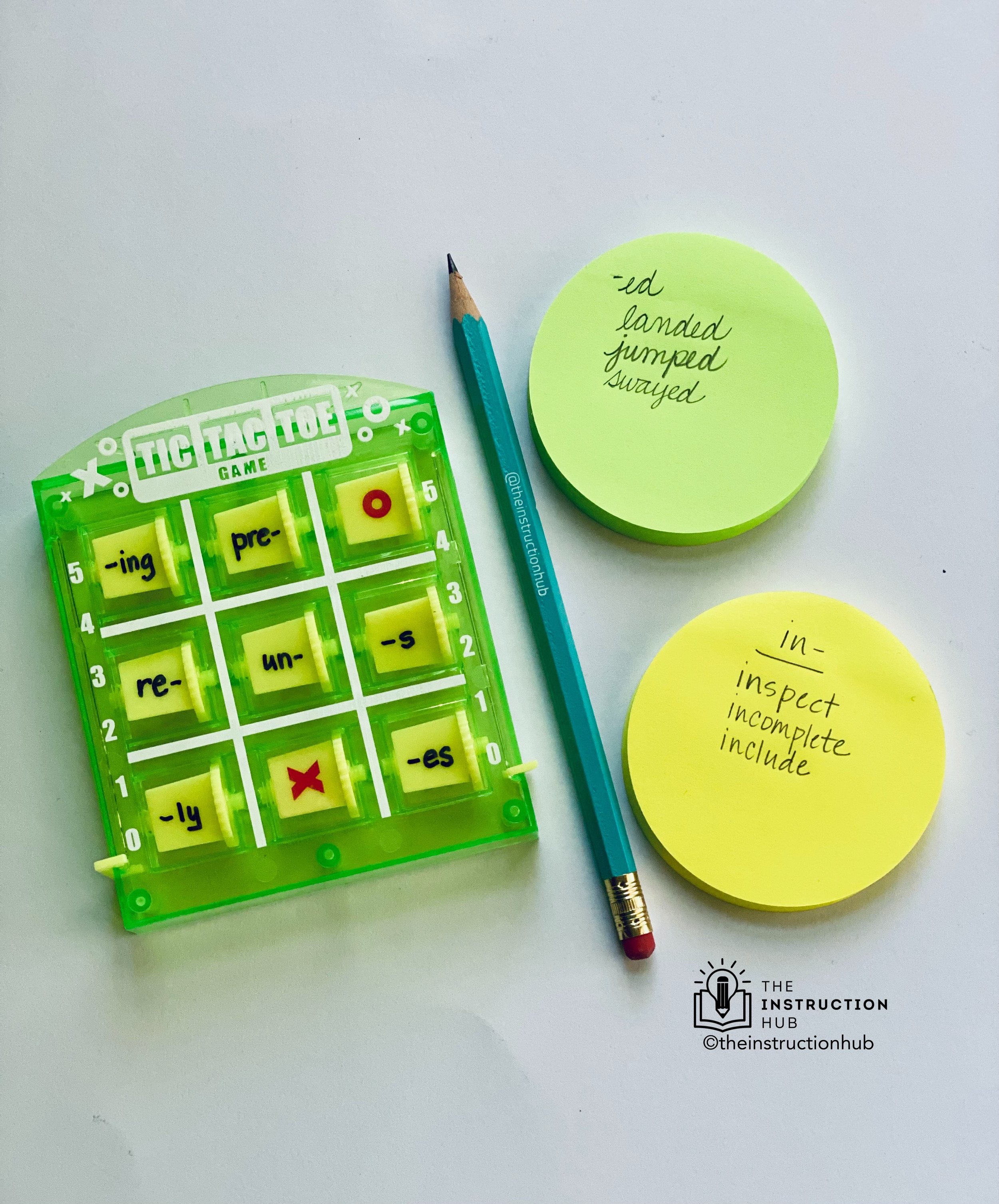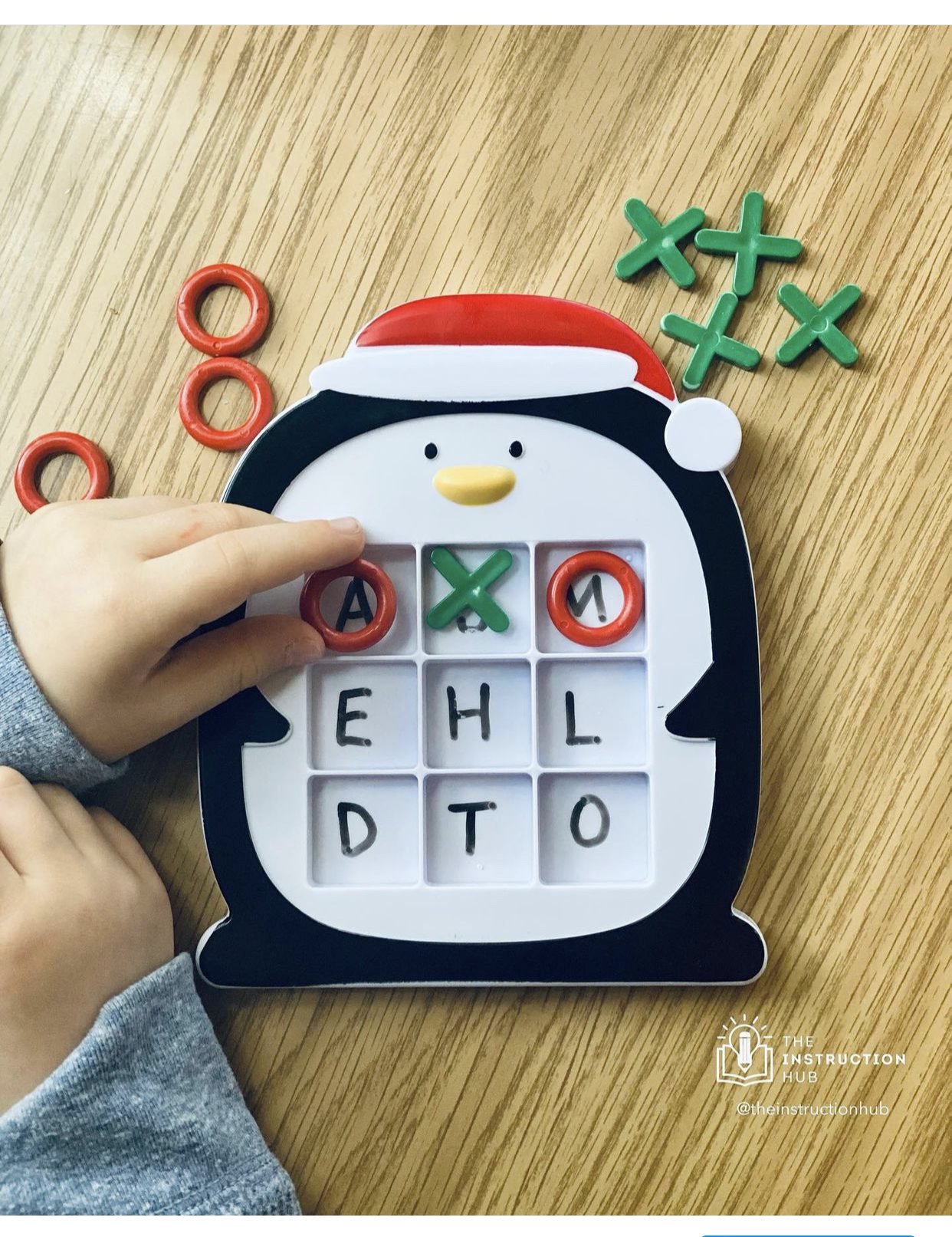Centers That Support a Structured Literacy Approach
When you think about group work or the word centers, does your mind go to that chaotic classroom scene in the Kindergarten Cop movie?
It doesn’t have to be that way! It takes practice and procedures, but you can get there.
What you have to keep in mind about centers, is that once you have created them you should be able to reuse most of them. Centers do not have to be frilly or complicated. You can use everyday items or low-prep materials, like the ones I suggest below, to see meaningful activities occur. We know that students who have learning differences need systematic, direct, and explicit instruction. We also know that they need ample review and reinforcement. By implementing centers that reinforce this type of instruction and are based on the science of reading, you give students that extra boost and opportunity for practice.
Please note that these activities are not the science of reading, rather they support the science of reading. The science itself is a body of research, and not necessarily tasks themselves. That is a post and discussion for another day.
Can older students use literacy groups?
Yes! I don’t call them centers. Instead, I call them literacy pods. Pods give me time to individualize or conference with other students to give direct and explicit feedback. Instituting these pods also gets me away from the old stand-by of silent reading. I want my students actively engaged with their learning. I have done it in first, third, fourth, and fifth-grade whole classrooms and with all ages in small groups.
Shifts in your group work can have a lasting impact. Let’s take a look at a few of my favorite types of small group options. I hope that you can implement these in your own work!
Card Review
Whether you use index cards or a pre-made set, cards are a great review tool. Students can look for syllable division patterns, spelling generalizations, morphemes, or recently learned phonograms to practice. By storing them in a photo album or in photo sleeves, you have a ready-to-go and ready-to-reuse task. I like to have my students use a dry erase marker and “work their words.’ This means that they look for a challenging phonogram or spelling pattern that we have been working on.
Purposeful Sorts
Sorts can have a bad reputation. When used accurately and with purpose, a sort can be a great review tool and a great informal assessment. I like to have my students practice patterns, generalizations, or guiding concepts. For example, they can practice when c will spell the soft sound /s/, and when it will spell the hard sound /k/ (as pictured below). Sorts I use are designed to review content that we have already learned about or have recently learned about in our lessons. It involves analyzing language (or content area material) and revisiting previous knowledge. I do not have students sort just to sort. I sort with intention! An added bonus - remember those cards from above? Reuse them for a sort!
Tic-Tac-Toe
The game with endless possibilities! You can see below where I have a tic-tac-toe set that reviews letter names (and sounds), and an example where the student is reviewing beginning affixes. With the prefix/suffix example, my student would pick an affix and give the keyword, meaning, and part of speech (suffixes only). If they were correct, they could turn their x or o over. I would then ask them to list a few example words for that affix. It isn’t just a simple game. I always have a layer of analyzing the language included.
Make Your Own Puzzle
I grabbed these online (#ad). I have vowel team sets, short vowel flag sets, suffix sets, and so many more. This is a great warm-up, partner activity, or literacy center. The students take turns analyzing and reading the words. They can then work together or work with you to complete the puzzle. Who doesn’t love a puzzle!
Low Prep Resources for Centers
The Instruction Hub’s Favorite Resources (affiliate link)
A note on “cutesy” materials:
For the most part, you will find my materials involve items I already have and materials with a lot of blank space. This is intentional in order to support my learners with visual, attentional, and learning challenges. However, I do love a good manipulative, prop, or hook to help them remember. Sometimes these items may not be a traditional learning tool. When used appropriately and meaningfully, I am all for it. Remember we are competing with games that change images in a matter of seconds. We have to have something to draw them in and boost their desire to return to learning. Our brains respond to novelty.
Leave a comment below if you have any questions or would like to share your favorite literacy center! Thanks for reading!
This information is the intellectual property of ©2021 The Instruction Hub. Do not use or repurpose without expressed permission from The Instruction Hub. Please give The Instruction Hub an attribution if you choose to use, reference, or quote/paraphrase copyrighted materials. This includes but is not limited to blogs, social media, and resources.





